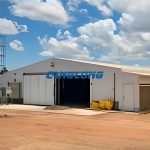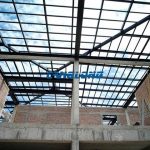Steel construction fire prevention measures
Steel is a widely used material in modern architecture due to its high strength, durability, and ease of construction. However, steel construction poses unique challenges in terms of fire prevention and protection. Here, we will discuss the various measures that can be taken to ensure the fire safety of steel structure buildings.
Selection of fire-resistant materials
The use of fire-resistant materials is crucial in steel construction. Steel frames with fire-resistant coatings or intumescent coatings are preferred. Intumescent coatings expand when exposed to heat, forming a thick insulating layer that helps prevent the spread of fire. Fire-resistant steel grades such as stainless steel or heat-resistant alloys can also be used in critical areas.
Fireproof design
Fireproof design is a key aspect of steel building construction. The building’s layout and design should facilitate the spread of smoke and flames. Frequent openings such as doors and windows should be avoided in firewalls and smoke barriers. Similarly, the use of firewalls and smoke barriers should be maximized to segregate buildings into smaller fire compartments.
Sprinkler systems
Sprinkler systems are an effective means of controlling and extinguishing fires in steel structure buildings. These systems are either automatic or manual and are designed to operate at low pressure. The sprinkler heads are spaced at regular intervals throughout the building, with each head containing a glass cylinder that breaks open when the temperature reaches a preset level. The system then releases water mist to cool the surrounding area and extinguish the fire.

Fire detection and alarm systems
Early detection of a fire is crucial to containing its spread. Fire detection systems use a combination of heat, smoke, and/or gas sensors to detect the presence of fire. These systems are either stand-alone or integrated into a building’s automation system. When a fire is detected, an alarm is sounded, alerting occupants and prompting emergency response measures.
Emergency escape plans
It is crucial to have emergency escape plans for steel construction. These plans should cover all possible exit routes and should be clearly marked on site maps and directories. Regular drills should also be conducted to ensure that occupants are familiar with the escape routes and can evacuate quickly in the event of a fire emergency.
Training and education
Occupants of steel structure construction should receive regular training on fire safety measures. This training should cover how to use fire extinguishers, how to evacuate safely, and what to do in case of a fire emergency. Educational programs should also cover the importance of regular maintenance of fire safety equipment such as sprinkler systems and fire alarms to ensure their proper function during a fire event.
In short, fire protection measures take a variety of measures to ensure the safety of steel construction in fire protection measures. The selection of refractory materials, fire protection design, sprinkler systems, fire detection and alarm systems, emergency escape plans, and training and education are all crucial. important.











